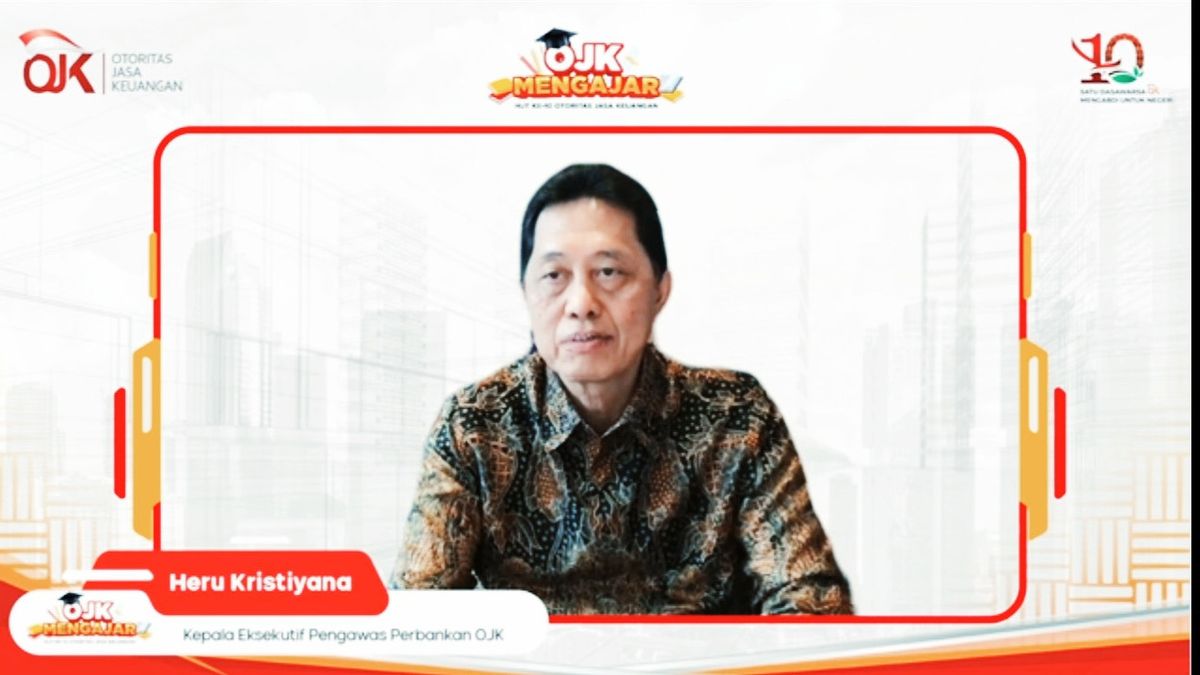JAKARTA - Member of the Board of Commissioners of the Financial Services Authority (OJK) Heru Kristiyana said there were at least four evolutions and transformations experienced by banks to enter the current digital era.
According to him, the first thing happened at the beginning of the establishment of this financial services institution in 1472 until 1980. At that time, banks were still fully implementing conventional principles by relying on face-to-face meetings between customers and the bank.
"Mainframe computers have been used but are not directly connected to customers," he said of the OJK Teaching webinar which was held on Friday, October 22.
The second occurred from 1980 to 2007. During this period, the Bank 2.0 generation emerged. Its birth was marked by the use of automatic teller machines (ATMs) which helped quite a lot with banking transactions.
“Customers can do banking activities without having to come. At this time, internet banking has also started to be introduced,” he said.
Third, is the period from 2007 to 2017 when banking services were available on smart devices (smartphones). There are also peer-to-peer lending financial technology (fintech) financial services institutions that have similar business activities to banks, namely providing loans to the public.
"Fourth is the current phase where banks are starting to forget the concept of face-to-face, branch offices, and various derivatives of the two," he asserted.
Heru said that technological resources will support the banking industry in the digital era 4.0.
"The bank is already in the stage of developing blockchain technology, artificial intelligence and databases, including optimizing big data," concluded Heru.
The English, Chinese, Japanese, Arabic, and French versions are automatically generated by the AI. So there may still be inaccuracies in translating, please always see Indonesian as our main language. (system supported by DigitalSiber.id)













